Archived Storm Damage Blog Posts
Guide to Setting Up a Family Storm Communication Plan
5/15/2024 (Permalink)
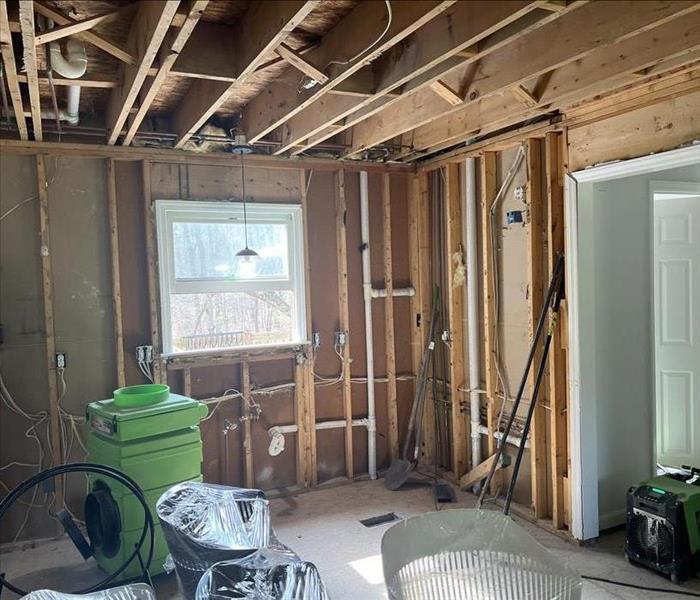 If your home has suffered from storm damage, don't hesitate and give our team a call today!
If your home has suffered from storm damage, don't hesitate and give our team a call today!
Storms can strike unexpectedly, leaving families vulnerable and disconnected if proper communication channels are not established. Having a well-thought-out family storm communication plan in place can help ensure everyone's safety and well-being during challenging weather conditions. Let's explore the key components of setting up an effective emergency communication plan for your family.
1. Identify Emergency Contacts
Begin by compiling a list of emergency contacts, including family members, neighbors, and friends who can provide assistance or support during a storm. Ensure that each family member has access to this list, either stored in their phone or written down in a designated location.
2. Choose a Primary Communication Method
Select a primary communication method that works best for your family, such as text messaging, phone calls, or social media platforms. Determine a designated point of contact who will be responsible for initiating communication and relaying important updates or instructions.
3. Establish Meeting Points
Designate specific meeting points both inside and outside your home where family members can gather in the event of an evacuation or separation. Choose easily identifiable locations that are easily accessible and safe from potential hazards.
4. Share Important Information
Educate family members about the types of severe weather events that could occur in your area and the appropriate response actions for each scenario. Discuss evacuation routes, emergency shelter locations, and safety precautions to take during storms.
5. Practice Regularly
Regularly review and practice your family storm communication plan to ensure that everyone understands their roles and responsibilities. Conduct drills or simulations to simulate different emergency scenarios and reinforce the importance of communication and coordination.
6. Utilize Technology
Take advantage of modern technology to enhance your family communication plan. Consider using mobile apps, emergency alert systems, and weather tracking tools to stay informed about developing weather conditions and receive timely updates from local authorities.
7. Stay Informed
Stay informed about current weather forecasts, watches, and warnings issued by the National Weather Service or local authorities. Monitor weather conditions regularly and be prepared to take action if severe weather threatens your area.
A well-designed family storm communication plan is essential for ensuring the safety and well-being of your loved ones during emergencies. By identifying emergency contacts, establishing communication methods, and practicing your plan regularly, you can be better prepared to weather the storm and navigate challenging situations with confidence. Remember, communication is key to staying safe and connected during times of crisis.
Your Post-Storm Safety Guide
1/17/2024 (Permalink)
When fierce storms ravage our neighborhoods, they may leave a path of destruction that continues to pose hazards even after the storm has passed. Servicing countless homes and businesses affected by storm damage, our SERVPRO® team lives by the mantras of preparedness and safety. As part of our ongoing commitment to these principles, we present a useful guide on post-storm safety to assist you as you navigate the aftermath of a storm.
Post-Storm Safety: A Checklist
- Avoid the Dangers Outside: If your local authorities advise against going outside, stay indoors. Hazards can exist in the form of fallen trees, downed power lines, or other debris scattered by the storm.
- Listen for Updates: Stay tuned to your local news or a trusted weather station for updates on safety advisories, road conditions, and storm updates.
- Inspect for Damage: Look for any visible damages to your property after the storm has passed. Remember, certain parts of your house, like the roof, may need a professional inspection to ensure safety.
- Be Cautious with Electricity: If you suspect any damage to your electrical system or if your house has been flooded, avoid switching on any electrical appliances until a professional has inspected it.
- Watch Out for Water Contamination: In the event of flooding, be weary of potential water contamination. It’s often advisable to use bottled water until you are sure the tap water is safe for usage.
Count on SERVPRO® for Help
SERVPRO of Winston Salem North is more than a recovery and restoration service—we are a trusted member of your community. Our mission goes beyond repair; we provide knowledge, guidance, and assistance at every step of your storm recovery journey.
After you ensure the immediate safety of your family and yourself, rely on our SERVPRO® team’s highly trained storm damage specialists to help with the damage. Our crew stands ready to handle any size of disaster, restoring your storm-hit property "Like it never even happened."
Armed with our post-storm safety guidance, you can find peace of mind knowing that you are well-equipped to weather the aftermath of any storm. Remember, storms may hit hard, but together, we bounce back stronger.
Stay safe and remember: SERVPRO of Winston Salem North is only a call away.
Steps to Restoring Your Home and Landscape after Storm Season
9/24/2023 (Permalink)
Storm season in North Carolina can be a challenging time for homeowners. The powerful winds, heavy rains, and potential flooding can cause significant damage to homes and landscapes. Once the storm has passed, the road to recovery begins. In this blog post, we will discuss essential steps to help you restore your home and landscape in the aftermath of hurricane season.
Ensure Safety First
Before you start any restoration work, ensure that your property is safe to enter. Check for any structural damage, downed power lines, or gas leaks. If you encounter any hazardous conditions, contact the appropriate authorities immediately and wait for their guidance.
Take photos or videos of the storm damage to document the extent of the destruction. This documentation will be invaluable when filing an insurance claim. Assess the damage to your home and landscape, noting any areas that require immediate attention. Focus on securing the property to prevent further damage.
Contact Your Insurance Company
Notify your insurance company about the storm damage as soon as possible. Provide them with the documentation you gathered and follow their instructions regarding the claims process. Take note of any temporary measures that you need to undertake to protect your property, as your insurance policy may cover these costs.
Assess and Repair Your Home
Thoroughly inspect your home for any structural damage, including the roof, walls, and foundation. Look for signs of water intrusion or weakened structures. Hire a professional home inspector or contractor, if needed, to assess the overall condition of your home and provide guidance on necessary repairs.
After ensuring your safety, start the cleaning and restoration process. Remove debris from your property, both indoors and outdoors. Clear blocked drains and gutters to prevent water from pooling and causing additional damage. If necessary, hire professionals to help with the cleanup and restoration efforts.
Restore Your Landscaping
Assess the damage done to your landscaping, including trees, plants, and hardscape elements. Remove any uprooted or damaged trees, and trim broken branches. Replant or repair damaged areas with resilient and native plants to help prevent erosion. Consider working with a professional landscaper who specializes in storm recovery to ensure a proper restoration of your outdoor spaces.
By ensuring safety, documenting the damage, contacting your insurance company, cleaning up, assessing and repairing your home, and restoring your landscaping, you can navigate the post-storm phase with confidence. Remember to seek professional help when necessary, and always prioritize safety throughout the recovery process. With proper planning and diligent efforts, you can restore your home and revitalize your landscape after the storms.
Protect Your Home From an Ice Storm
1/3/2023 (Permalink)
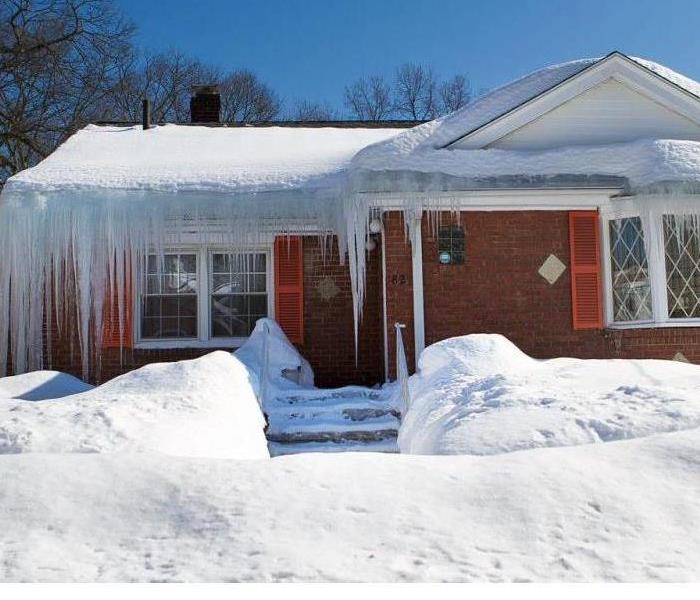 A house covered in snow and ice
A house covered in snow and ice
Now that winter weather is here, you may find yourself in the midst of an ice storm. Besides creating incredibly hazardous driving conditions, ice storms are also dangerous because it doesn’t take much ice accumulation to bring down tree branches, power lines and cause other damage to property.
Although you can’t completely safeguard your home from an ice storm, there are several steps you can take to minimize damage, most of which call for adequate, properly installed insulation.
Protect against frozen pipes by ensuring that pipes are insulated and all holes and cracks are sealed. Experts also recommend leaving cabinet doors open, which will allow your home’s heat to warm the pipes, and also leaving your faucets at a slow drip.
Properly insulate and vent your attic, which won’t only help with your home’s energy consumption–you’ll also prevent ice dams, which can cause roof damage during and after a winter storm, as well as water leaks inside your home.
Stock a few supplies in the event of a power outage, which can frequently occur during an ice storm. Bottled water, blankets, non-perishable snacks and candles/matches are great to have on hand, and can get you through a few days without electricity.
As a back-up, make sure your homeowner’s insurance includes coverage for this type of scenario. Even though you can’t completely protect your property, you’ll have peace of mind knowing that if damage does occur, your insurance plan can provide for coverage of repairs.
What to Do When You Need Emergency Storm Restoration
10/14/2022 (Permalink)
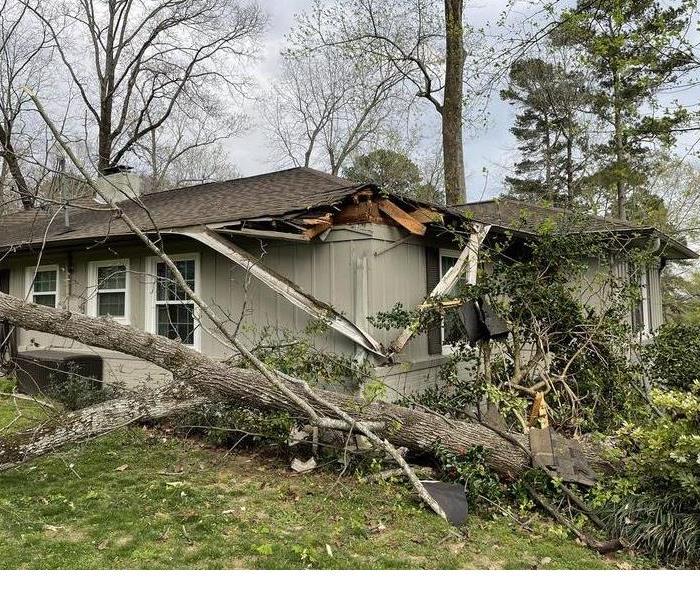 A house with a damage roof and a fallen tree on the house and front yard
A house with a damage roof and a fallen tree on the house and front yard
Storm damage is an unpredictable issue that people all over the world encounter every day. Because of this, it’s imperative that you have a storm restoration plan if you have or ever encounter it in the future. Knowing how you’re going to deal with the problem at hand can help ease you and your family’s worries about the future. Here’s what you need to do in order to get your life back to normal after encountering storm damage.
Identify the severity of the damage;
Before you start hiring people to take care of the restoration process it’s important to get a few steps out of the way first. It’s understandable that you’re in a hurry to fix things but failing to identify the damage and the severity of it can lead to you paying for repairs you didn’t need. Once you’re sure that it’s safe to inspect the situation you need to determine what is considered storm damage and what isn’t. Hiring a trusted professional to assess the situation can help you decide on what the best course of action is going forward. If you can, you should also try to provide pictures of the damage before anything is moved around so you can prove to your insurance what happened.
Contact your insurance provider;
Upon receiving a damage assessment you should call your insurance company so you can make a claim regarding the situation. You should be thorough when providing the details of your home or business’s deterioration due to the weather. Different types of damages are covered in different ways. Whether or not the building is suffering from wind damage, water damage, or falling debris can change the situation. If your building had problems beforehand then that could change things as well. Your homeowner’s insurance provider should instruct you on what to do next along with putting you in touch with some emergency restoration companies.
Working with a restoration company;
When hiring a restoration company it’s important to do your research into them beforehand. You don’t want a crew working on your home or business who is planning to cut corners or overlook the small details. Carelessness can lead to more repairs down the road so you make sure that before you hire a business you look at its reviews and company policy. You also need to know who’s going to be where and when so you don’t encounter any scheduling conflicts.
What is our mission?
SERVPRO of Winston-Salem North is here to assess your storm damage and determine the next step. If you need a roofing evaluation or have suffered exterior, Water, mold or other damages due to storms or other natural disasters, contact us and schedule a free estimate and start on the road to recovery.
Avoiding Winter Storm Damage
10/6/2022 (Permalink)
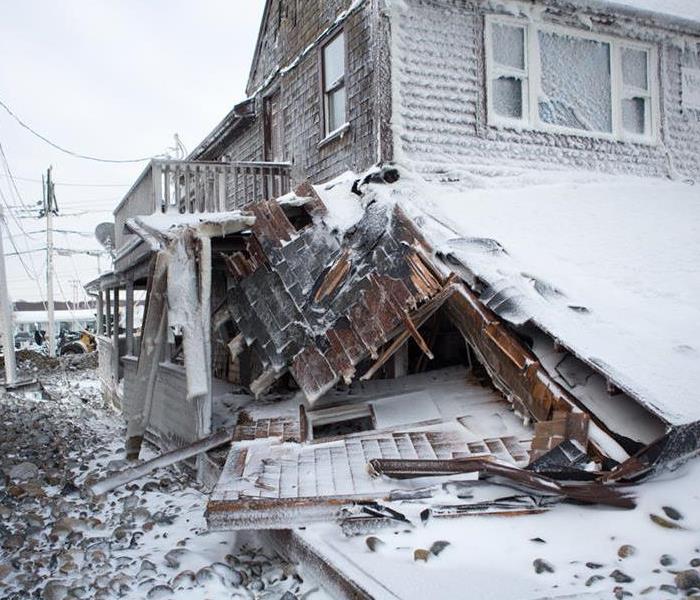 roof of a house collapsing due to snow pilling up from a snow storm
roof of a house collapsing due to snow pilling up from a snow storm
As you read this article, some business owners have already experienced damage from hurricanes. But more bad weather from winter storms — including windstorms, snow and, ice — is coming soon. Is your business prepared?
Winter storms rank third in terms of the dollar value of damage they cause, second only to hurricanes and tornadoes. According to Forbes, a “simple” snowstorm can cost well over a billion dollars. The billion dollar losses come from lost productivity and sales.
Are You Prepared?
Snow, ice, sleet: Organizations operating in areas that have freezing temperatures have specific insurance needs. The basic “named perils” property policy covers your buildings and contents from damage or loss caused by specific perils, or causes of loss, named in the policy. These include fire, lightning, explosion, windstorm or hail, smoke, and more. However, these policies do not include coverage for falling objects; weight of snow, ice, or sleet; water damage or collapse.
The most common types of property damage caused by severe winter weather are roof damage or collapse due to snow, ice or sleet, and water damage from burst pipes or “ice dams.” Ice dams occur when water fails to flow properly through gutters, allowing it to seep into a building, damaging ceilings and walls. The resulting water damage would not be covered by a basic “named perils” policy, nor would any of these other types of damage.
High hurricane- risk areas: In certain high-risk coastal areas of Southern states (including Alabama, Florida, Louisiana, Mississippi, North Carolina, South Carolina, and Texas), the standard business property policy excludes windstorm coverage. In these areas, business owners might have to obtain their windstorm coverage from a state-sponsored insurance pool, while a private insurer writes the rest of their property coverage. We can help you determine the amount of coverage you need.
Preventive Measures
Although you might have the right coverage for freezes, snow, ice, or windstorm damage, you still need to maintain your property. Before winter starts, take the opportunity to evaluate your roofs.
Large, flat roofs, those with heavy insulation, and those in shady areas have highest risk of dangerous snow and ice build-up, as do roofs of varying levels, which can create drifts. Skylights and vents can also cause structural weaknesses and leaks. Poorly insulated areas of roofs can cause problems by allowing heat to escape, causing snow to melt and refreeze.
Snow causes the most problems when it accumulates over time. The actual weight of the snow doesn’t depend on its depth, but rather the amount of water that it contains. Water content varies because of the difference in snow crystal structure. In general, snow that falls at warmer temperatures will be denser; snow also packs down over time and becomes denser. Zurich Re, a reinsurance company, estimated that one foot of dry snow weighs about three pounds per square foot, while wet snow can weigh as much as 21 pounds per square foot. If snow accumulations occur in your area, plan ahead for safe removal.
Likewise, in high-wind areas, roofs, windows, and doors can allow wind to enter and are your building’s most vulnerable areas. Checking structures on a regular basis to ensure they are in proper working order and meet current codes can help you prevent major damage. Ensure your company has enough business income coverage to weather a loss in income due to damage from snow, ice, windstorm, or other covered cause.
SERVPRO can also help you prepare with our Emergency Ready Profile. Have everything you need when disaster strakes at the touch of a button on our free mobile app. SERVPRO is faster to ant size disaster!
Common Storm Damage Scenarios
10/6/2022 (Permalink)
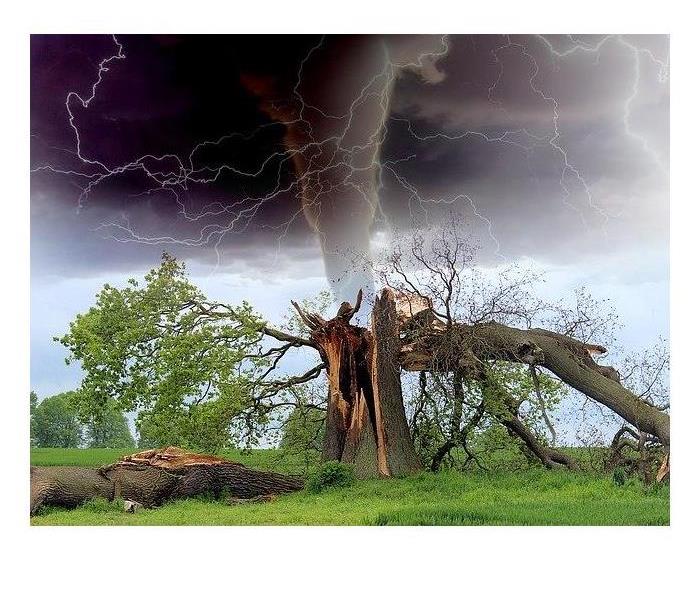 There is a damage tree that has been struck by lighting in the middle of the picture with a tornado and lighting in the background.
There is a damage tree that has been struck by lighting in the middle of the picture with a tornado and lighting in the background.
Severe storms can be frightening and dangerous, and safety has to be your first priority. If your area has seen major problems, be careful. If you think your home has been structurally damaged or if flood risk remains, don’t go inside until a professional says it’s safe. Spending a few nights at a friend’s house or in an emergency shelter is a small price to pay.
Once the disaster has passed, it’s important to assess the damage and get started with cleanup and restoration. Below, we’ve provided information about the damage different kinds of storms can cause and how you can protect your property value in different scenarios.
Insurance Coverage
Severe damage from most storms is covered under home and business insurance policies, but the specifics vary. The amount you are responsible for paying depends on your premiums and deductibles, the age and structure of the building, the extent of your damage, property values in your neighborhood and much more.
Most storms are considered acts of God, which means that your insurer can’t single you out for rate increases. However, failing to file claims in a timely manner can make you ineligible for coverage, and entire neighborhoods can be subject to rate increases following disasters. That means you should always file claims as quickly as possible so you don’t end up paying more in future premiums without receiving the benefits now.
First, you should document the damage to your home to the best of your ability. Take a lot of photos and be sure to hang on to any receipts and documents related to appliances and maintenance work you completed prior to the storm. Then, contact a storm damage restoration contractor and your insurance company. Your insurer will send a claim representative or assessor. The best contractors can work directly with insurers to help you save as much money as possible.
Winter Storm Damage
Winter storms ravage much of the U.S. and Canada every year, and areas that don’t get hit with snow often deal with ice storms and freezing rain. When you’re dealing with blizzards, lake effect storms and snow squalls, damage to your home can include roof and structural damage from heavy snow as well as damage to fascia, exterior pipes and siding. These wintry storms often come with high winds, which can exacerbate damage by causing shingles to break loose. These storms can wreak havoc on utility lines.
Winter storms and freezing weather can also create ice dams, which trap water in between your roof and a layer of ice. These can be easy to miss, but are important to be aware of because they can quickly lead to leaks and then to mold and structural damage.
After a storm, don’t get on the roof or climb into the attic until you’re sure it’s safe. You or your home restoration contractor should check for any signs of leakage in the attic, missing fascia and shingles, bent or detached exhaust pipes, damaged roof vents and damage to the valleys and edges where your roof meets the walls.
When ice storms hit, you may need to be even more cautious. These storms are characterized by leaving at least a quarter of an inch of ice on surfaces. They can cause roofs to collapse, trees to break and power lines to snap. Try to stay in your home until the ice storm has passed and plan ahead with emergency food, water, supplies and power sources.
Hail Damage
Hail can happen anywhere, but some parts of the U.S. see it more often than others. States in the Midwest are most susceptible. These storms are most common between May and September. Hail pellets are usually between .2 inches and 1.75 inches in size, but can be much bigger. In fact, the biggest known hailstone came in at 7.9 inches in South Dakota in 2010.
Hail damage isn’t always visible. When it is, you can look for cracked shingles, dents in shingles in a random pattern, and bent roof vents and pipes. You can also sustain damage to siding. Invisible damage comes into play when substrate materials beneath the shingles are damaged. If you think you have hail damage, we highly recommend getting an expert opinion. This kind of damage can lead to serious roof leaks that can spread and cause structural problems.
Lightning and Thunderstorm Damage
Lightning storms can occur anywhere in the U.S., and they bring the threat of fires and severe structural damage. Even if your lightning rods work properly by channeling the energy to the ground, it’s possible to see damage to electrical wiring, appliances, antennas, satellite dishes, cable or telephone lines, and steel framework. Unless there are signs of fire, be sure to stay indoors until the storm is over because your home will protect you.
Thunderstorms come with risks even if you aren’t hit by lightning. You could see dangerous flash flooding, hail and high winds.
Storm-related Flood Damage and Tidal Surges
Flooding presents a serious risk to your home and your safety. According to the U.S. National Severe Storms Laboratory, floods kills more people every year than lightning, hurricanes and tornadoes combined.
When it comes to structures, flooding can lead to dangerous contamination and damage to drywall, support beams and foundations. You are at risk for mold within the first 24 hours of a flood, so it’s vital to stop the water from flowing and start remediation quickly.
Different types of floods come with different risks. River floods and flash floods are common when snow melts and have been known to completely overwhelm structures. Coastal floods and storm surges are even more dangerous, and usually lead to evacuation warnings. These can destroy homes entirely, so it’s best to listen to weather reports and plan ahead. Debris flows, which are often made up of heavy mud and plant material, can crush houses and sweep them away.
High Winds, Tornadoes and Hurricane Damage
High winds can occur virtually anywhere, and thousands of tornadoes and hurricanes hit the U.S. every year. Severe winds are defined as exceeding 50-60 mph and are categorized as follows:
Straight-line winds: This broad category includes all winds not associated with rotation
Downdrafts: These winds are small columns of air that sink quickly toward the ground
Downbursts: These winds, which can be as bad as tornadoes, are a result of strong downbursts and are usually associated with thunderstorms
Microbursts: These small, highly concentrated downbursts can exceed 168 mph and can be wet or dry.
Gust fronts: These occur when cold air clashes with warm air from a thunderstorm
Derechos: These long-lived, widespread wind storms come with a band of multiple showers or thunderstorms
Haboobs: These are walls of dust pushed along the ground by thunderstorm downdrafts
Bow echoes: These winds are shaped like an archer’s bow and can produce severe straight-line winds and even tornadoes
Tornadoes: These destructive vortexes can exceed 300 mph and travel over dry land
Cyclones and Hurricanes: In the U.S., these tropical storms rotate inward toward areas of low atmospheric pressure and are most common near the Gulf of Mexico and the eastern seaboard.
Damage from wind can be widespread and can affect not only your structure but also surrounding landscaping and asphalt. Be aware of the potential for falling trees and poles and damaged power lines, and take care of these problems right away. After the storm, examine your property for structural damage to the home, including windows, siding and roofs. In the most extreme scenarios, roofs can be blown clean off.
Hire SERVPRO! With over 50 years of experience in Cleaning, Restoration, and Construction, you can trust us to get the job done, and done right. We make any size disaster Like it never even happened.
Preparing for Hurricane season
9/19/2022 (Permalink)
 Trees that are being bent in the winds created by a hurricane
Trees that are being bent in the winds created by a hurricane
Personal emergency preparedness is of importance, especially when it comes to areas that are prone to disasters such as hurricanes. Peak hurricane season in the Atlantic is mid-August to late October.
Hurricanes are dangerous and destructive causing high winds, flooding, heavy rain, and storm surges.
MAKE A PLAN:
Stock up on emergency supplies for your home and car.
Find out where the nearest shelter is and the different routes you can take to get there if you have to leave your home.
PREPARE AN EMERGENCY FOOD SUPPLY:
This should include but not be limited to shelf-stable canned foods that require no heading. Also, make sure you have pet food.
Avoid foods that are very salty or spicy, as these foods increase the need for drinking water, which may be in short supply.
PREPARE AN EMERGENCY WATER SUPPLY:
Store at least 1 gallon of water per day for each person and each pet. Consider storing more water than this for hot climates, pregnant women, and for people who are sick.
Store at least a 3-day supply of water for each person and each pet. Try to store a 2-week supply if possible.
Damage Caused by Wind
9/19/2022 (Permalink)
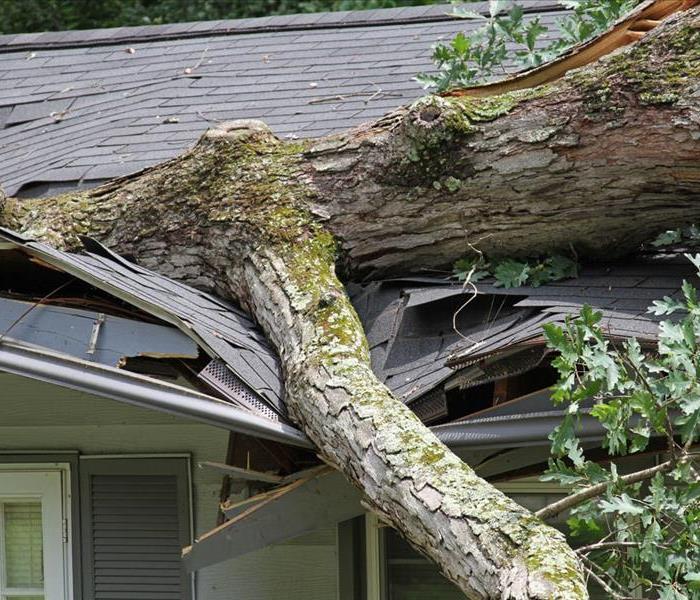 House with a tree fallen on it due to a wind storm
House with a tree fallen on it due to a wind storm
There are different types of winds, and the damaging winds are commonly referred to as straight-line winds. This is aimed at differentiating the type of damages that they cause, from that caused by tornadoes. SERVPRO offers exceptional services to the people who have been affected by wind storm damage
There are several processes that cause the strong winds that cause damage to property from situations such as fallen trees. The main objective of SERVPRO is to rebuild any property that has been subject to wind damage and restore the clients’ lives to normalcy. The Tips below will show you how to be prepared for damages caused by winds. What Are Damaging Winds?
Any wind that is blowing at a speed that exceeds 50-60mph is classified as damaging winds. Typically it is more common to experience these winds from more frequent events such as severe thunderstorms than it is from a tornado.
What Are Straight-Line Winds? Straight-line winds are a type of wind that come from a thunderstorm, move horizontally along the ground and are not associated with tornadoes. These winds are common in the Midwest United States during the late spring and summer months, although they can take place anywhere.
Straight-line winds are often seen during thunderstorms called "derechos“. Derechos are fast-moving bands of thunderstorms with destructive straight-line winds. These winds can be just as powerful as those found in hurricanes and tornadoes. What makes derechos different is that unlike hurricanes and tornadoes, these winds follow straight lines.
How Bad Are Straight-Line Winds In the lower 48 states in the US, Straight-line winds (damaging winds) account for 50% of the extreme damage reports. Damaging winds tend to be more common than tornadoes, and this causes more damage in most regions. Winds can blow at speeds that even exceed 100mps and this would cause damage that stretch for so many miles. With the services offered by SERVPRO, it becomes easier to recollect your life and bounce back to the usual life that you are used to. Damaging winds cause a state of emergency, and you would need professional assistance immediately. We make all storm damages Like it never even happened
Damage during Hail Storms
9/16/2022 (Permalink)
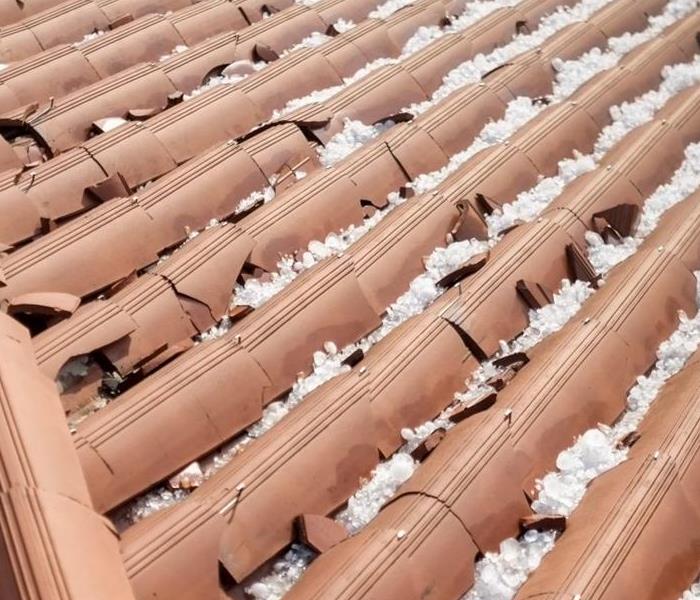 Fall Storms can produce unseen roof damage from hail.
Fall Storms can produce unseen roof damage from hail.
Hailstorms can cause serious damage to a roof. The impact from a hailstorm can bruise or crack roofing shingles, potentially leading to water damage in your home.Even if you don't have obvious holes in your roof due to hail damage, you likely still need a hail damage roof inspection to find out how much damage you are dealing with and how to proceed with any roof repairs needed.
Hail as small as half-dollar size will cause minor damage to most roofs and cracks in siding.
Walnut size hail will cause severe roof damage and dents in wood.
Golf ball size hail will cause exterior paint damage and car dents.
Hail damage can be cosmetic or functional. things like broken edges, bruises, punctures and granule loss can cause serious complications, though they may seem cosmetic at first.
Granule loss: The sandpaper-like part of the shingle. When a shingle loses granules, its asphalt coating is exposed to the elements and this could lead to premature aging of the roof.
Cracks in the shingles: Hard hail impacts can cause cracks. These can lead to exposure and tears, leaving your roof with bare spots, therefore unable to effectively protect your roof from inclement weather.
Exposed fiberglass mat: Hail impact can shatter the shingles' surfacing. This could cause the shingle to break away from the fiberglass mat underneath.
Fractured fiberglass mat: This damage is slightly harder to detect and normally will require a trained professional. A fractured mat can result in tears from the point of impact.
A typical homeowners insurance policy will include coverage for roof damage from hail but coverage may be applied differently, depending on your area, your insurance carrier and the details of your policy.
Tree Maintenance Before A Winter Storms Strikes!
1/6/2022 (Permalink)
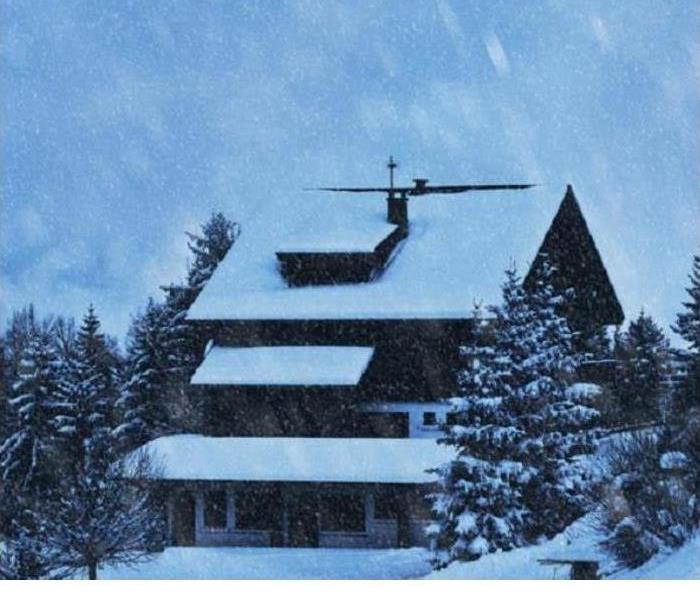 While we hope you never experience a disaster in your home, we do know we are ready to help you restore it in the event of one
While we hope you never experience a disaster in your home, we do know we are ready to help you restore it in the event of one
Winter is here, which means it’s getting chilly out there. When it gets chilly, water freezes. I’m not forging new ground here but hang with me. This is gonna get useful!
Snowstorms and ice storms are an unusual mix of fun and danger. We’ve all made snowmen and snow angels outside after a good storm dumped some powder on us, but there are downsides too! Snowstorms, and especially ice storms, can bring down trees near your house, destroying power lines, windows, roofs, (etc.)
It’d be prudent as the winter kicks up to be proactive and look around your property for any dead or dying trees or branches hanging out near your house or car or shed and trim those puppies up. It’ll take a few minutes of your time today in exchange for a huge headache later!
Three out of three property owners who trimmed the trees near their homes were grateful afterward. (I only asked three people.) Now chop-chop!
What Kind of Content Can Be Saved After a Flood?
10/20/2021 (Permalink)
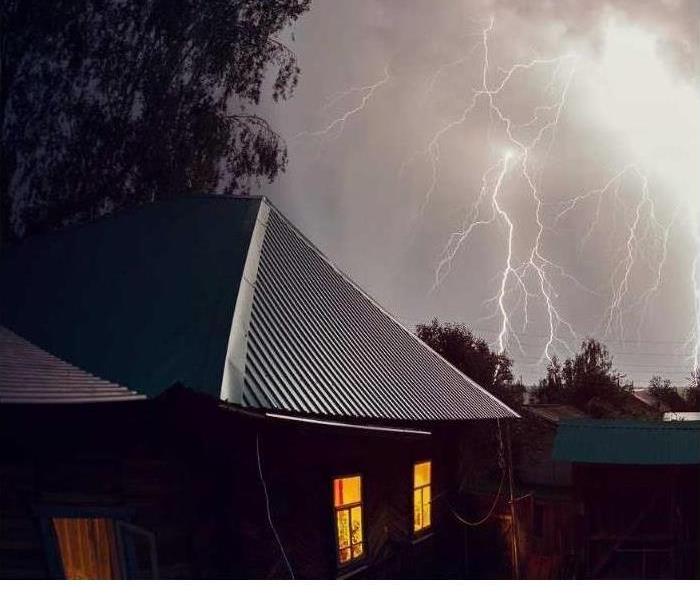 While we hope you never experience a disaster in your home, we do know we are ready to help you restore it in the event of one.
While we hope you never experience a disaster in your home, we do know we are ready to help you restore it in the event of one.
Content Cleaning After Flood Damage
There are many questions that go through your mind after a destructive flood takes hold of your Winston Salem, home. However, one of the most consistent inquiries often relates to the state of your personal belongings and whether or not content cleaning can effectively save them from being removed for good. Here’s a common list of household items that often need to be removed from the home immediately, as well as others that can potentially be saved if black water hasn’t completely consumed the home.
Porous Materials
More often than not, porous materials and furnishings in your home are going to be the most affected by excess water in your living space, simply due to their absorbent nature. Belongings that are most difficult to save include the following:
- Upholstered furniture
- Carpets
- Drapes or curtains
- Saturated woodwork
- Artwork or paperwork
While there’s no definitive answer that applies to every situation, the majority of these materials can become the most densely saturated and therefore the hardest to clean and restore. However, the result depends on the extent of the water damage overall and how long it takes for you to contact professional restoration services after an event.
Nonporous Materials
Nonporous belongings, such as anything made of plastic, metal, etc., are often the best for content cleaning purposes. Such materials don’t absorb water, making them easy to simply clean off and restore in no time. Electronics or appliances can become unusable if they’re submerged for a significant amount of time, but the result depends on the severity of the water damage.
The biggest factor in determining the survival of any home furnishings is whether or not dangerous black water has come into play. This mixing of sewage and floodwaters can be far more difficult to clean and can lead to fewer items being salvageable, regardless of their material.
Despite what may initially seem like a lost cause, there’s always a possibility of saving your home’s belongings in Winston Salem. Therefore, content cleaning should always be handled by professional restoration specialists who can do their best to save as much as possible.
Prepare For Floods and Storm Damage
10/7/2021 (Permalink)
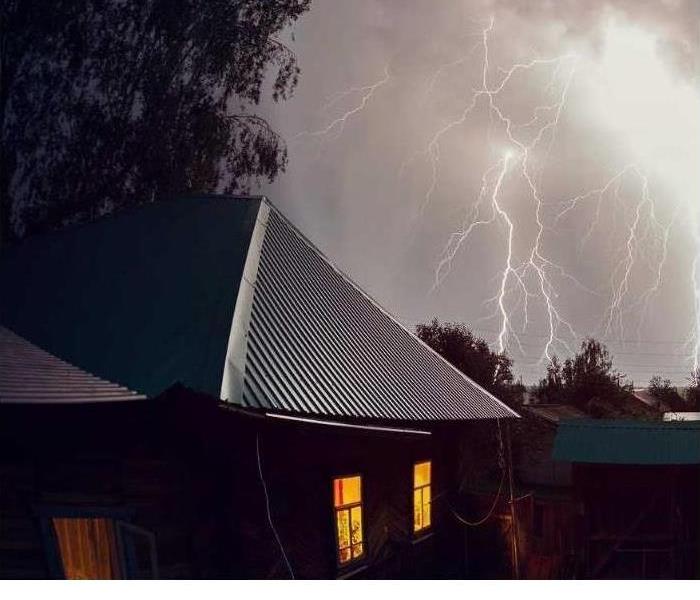 While we hope you never experience a disaster in your home, we do know we are ready to help you restore it in the event of one.
While we hope you never experience a disaster in your home, we do know we are ready to help you restore it in the event of one.
Unfortunately, the likelihood of floods is increasing across the U.S., even in areas that aren’t usually prone to excess water. But the fact remains that if rain is possible, so are floods.
A flood officially occurs when two or more acres, or two or more properties, have been partially or completely inundated with water.
But if you are facing a flood, the last thing you’ll be worried about is the official definition. You’ll be worried about your safety and the safety of your property.
This blog contains helpful flood preparation tips - not to worry, none of them suggest building an ark.
- Back-Up Power In an emergency, you should have a generator. It’s impossible to know whether or not a storm or flooding will take out the power – and you don’t want to be left in the dark. The type of generator you need depends on a few different variables.
Don’t forget: water is a conduit for electricity, and after a flood, you’ll be facing a lot of excess water. When you know that flooding is imminent, move all your appliances and electrical devices to safer ground.
- Risk Level Before flooding is expected, you should become familiar with your property’s risk for floods. Local government and FEMA are good resources for this. A familiarity with flood zones, risks, and causes is the first step of preparation.
Another smart risk-management tool is a weather radio. Purchase a weather radio and learn how to use it, including what the different emergency notifications mean.
- Emergency Prep It’s important to have an emergency preparedness kit that can handle any emergency. But you should also have supplies tailor to specific severe weather events. Because floodwater contains contaminants, be sure to pack plenty of clean and fresh water. Choose a waterproof case for your kit and all it contains, like important documents.
- Evacuation Plan Your evacuation plan should include two things. One: become familiar with the local and federal government plans for evacuation. Second: create a personal evacuation plan and involve all members of the family. The plan should be practiced until everyone has it memorized. Be sure to include an emergency communication plan as part of the overall evacuation plan.
Many floods are caused by severe storms and excess rain. Remember that significant storm damage may be caused and may not be noticeable until after floodwaters recede.
Making Sure Your Family is Prepared for Severe Weather
10/7/2021 (Permalink)
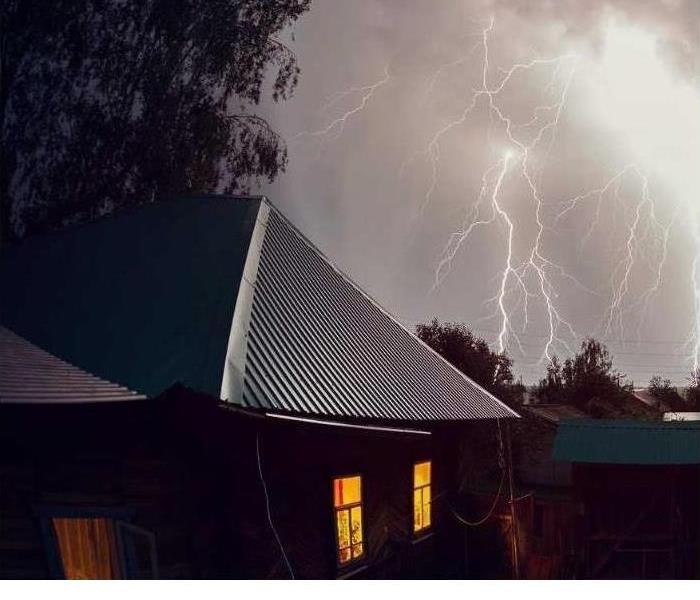 While we hope you never experience a disaster in your home, we do know we are ready to help you restore it in the event of one.
While we hope you never experience a disaster in your home, we do know we are ready to help you restore it in the event of one.
Today, we are fortunate to have advance warnings for some types of severe weather, but there are also times where Mother Nature manages to catch us by surprise.
Fortunately, there are steps you can take and safety tips to follow that will guide you in preparing for your family’s safety in various severe weather occurrences.
Where to Start
One of the best ways to ensure your family’s safety is to have an established family emergency plan at the ready.
Be sure to go over your plan together as a family at the beginning of each weather season if there is an emergency plan in place so everyone knows exactly what to do.
Here are some things to take into consideration when creating your family emergency plan if you have not yet done so:
1. How will emergency alerts and warnings be received?
Thanks to technology today, emergency alerts and warnings are at our fingertips with our smartphones that are equipped with a weather app or Google. We can quickly receive emergency alerts, that provide us with valuable time in severe weather situations. Warnings and alerts are also still broadcast over radio and TV.
2. What type of storm shelter do you have?
Where tornadoes are a common occurrence, you’ll want to be in the lowest part of your home, preferably a basement, or if there is no basement, use an interior room on the lowest level that is away from corners, windows, doors, and outside walls. Tornadoes aren’t the only weather circumstance that requires a form of storm shelter, and you can learn about more of the situations that call for them by visiting ready.gov.
3. What are the evacuation routes?
Have you mapped out multiple evacuation routes because hurricanes, flooding, and fires can force you from your home at a moment’s notice? It’s wise to have multiple routes in the event one is impassable, and be sure you find places to stay with your pets along the way if you have furry family members involved in your evacuation.
4. How will everyone stay in touch?
Cell phones are the easiest way to keep in touch with your family, but in some circumstances, that just will not be possible. Cell phone towers can be damaged and phones could be lost or left behind; not to mention batteries will not last forever and there will be no power to recharge them.
Your family should have an emergency communication plan in place as well as a safe meeting place so that you can all meet there if separated.
If a storm does cause damage to your home or business, don’t hesitate to call your friends at SERVPRO® of Winston Salem North to get the cleanup and restoration process started.
After The Storm: Know What To Look For In Your Winston Home
9/20/2021 (Permalink)
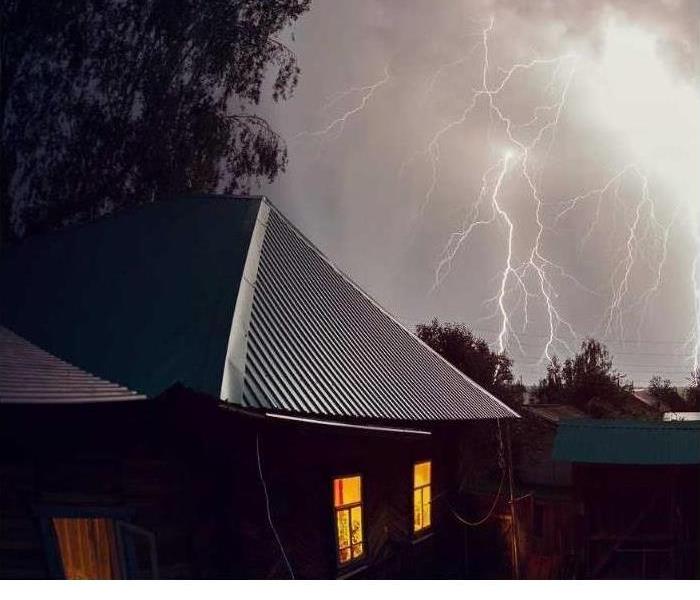 While we hope you never experience a disaster in your home, we do know we are ready to help you restore it in the event of one.
While we hope you never experience a disaster in your home, we do know we are ready to help you restore it in the event of one.
We hear almost daily about being prepared. Whether it’s something simple like preparing for the first day of school or something more serious like preparing your home for possible storms, having a checklist may help prevent you from becoming overwhelmed.
If you have structural damage from a storm, vacate the property immediately and contact your first responders, your insurance agent, and the SERVPRO of Winston Salem North. While your agent starts the claims process, our team of highly trained technicians can begin securing your property once first responders deem it safe to enter. Our team will board up windows, tarp roofs and check for other visible damage. At the same time, first responders begin to assess any other emergency needs such as downed powerlines or other safety concerns.
Once the property is secure, you or the team of SERVPRO of Winston Salem North can begin taking photos of the damage before anything is moved. Once all the damage has been documented, our technicians will begin to assess what can be saved.
We would begin inspection of your home, looking for cracks, leaks, and other structural damage so a plan of action can be implemented. We highly recommend that you don’t try to do this yourself. If not correctly handled, storm-damaged can lead to further problems such as mold in your home. To learn more or schedule your free estimate, give us a call at 336-744-104.
4 Things To Do If Your Home Floods
9/20/2021 (Permalink)
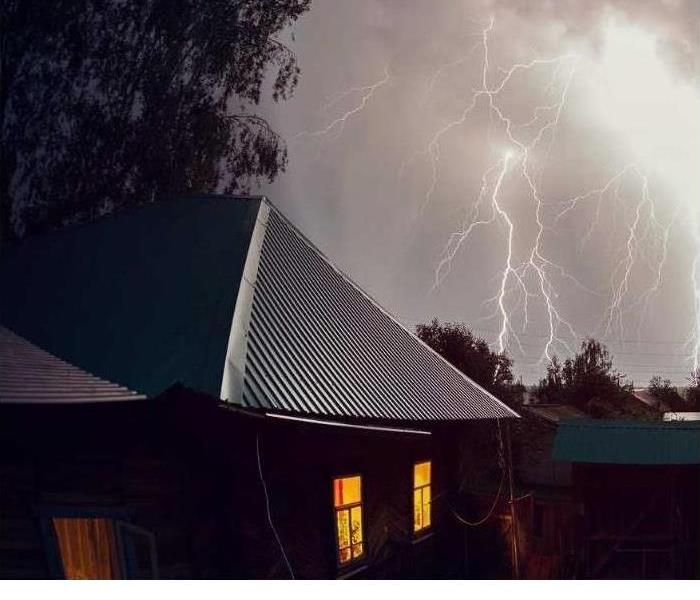 While we hope you never experience a disaster at your business, we do know we are ready to help you restore it in the event of one
While we hope you never experience a disaster at your business, we do know we are ready to help you restore it in the event of one
Rain, rain, and more rain. They’re moments in the year, sometimes too many where our community goes days on end with rain. Then changing over to snow and ice in the winter if the temperatures manage to drop below freezing for a substantial amount of time. While snow is pretty to look at, what often accompanies it is a fearful weather condition. Ice can cause trees to topple over onto your roof creating a hole where water can seep into all areas of your home including the basement.
Falling trees can rupture the pipes of your home as well which may cause hundreds if not more gallons of water to spew out into your basement, flooring, walls, and ceiling. Any amount of standing water in your home may spell disaster if not mitigated promptly. Significant water damage can begin to warp your hardwood floors, stain your carpeting, and create a mold growth situation.
Calling an experienced water cleanup crew with IICRC Certification and experience in restoration is key to beginning the process of getting your home back to normal. Our team is trained in proper drying methods and mold testing to help keep your family safe. We’ll also reconstruct your house after it’s been restored to streamline the process.
When many customers call our office to request our services it’s critical you’ve already completed a few tasks beforehand. Listed below are a few key steps homeowners should take if they experience water damage.
- Shut Off The Water Source
- Locate the cut-off valve in your home. It’s likely underneath your kitchen or bathroom sink.
- Do What You Can In Order To Mitigate The Damage
- Try to soak as much water as you can on your own using towels.
- Call A Water Cleanup Company
- Available 24/7 with 20+ years of experience and contractor license for repairs.
- Speak To Your Home Insurance Provider
- Save your insurance agent’s contact information on your phone, or write it down.
If your home or business is in need of our services whether for fire, water, or mold damage; perhaps even deep cleaning services, call the experts today – SERVPRO of Winston Salem North, 336-744-5104.
What To Do Before A Hurricane Arrives
9/17/2021 (Permalink)
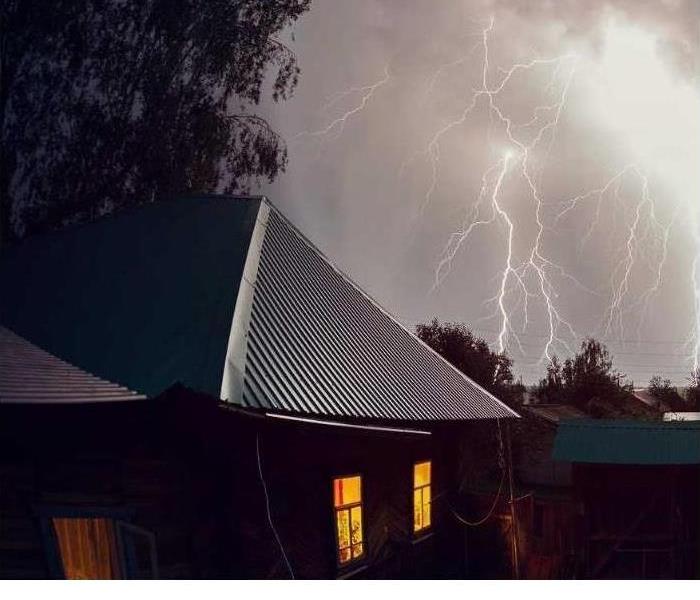 While we hope you never experience a disaster in your home, we do know we are ready to help you restore it in the event of one
While we hope you never experience a disaster in your home, we do know we are ready to help you restore it in the event of one
As many of you know hurricane Ida swept through Louisiana, New Jersey, and Pennsylvania. Luckily it skipped over North Carolina but in the event, one does pass over us during this hurricane season knowing what to do before it hits can help prevent damage or loss to your family, house, and property.
First things first, in the event of an emergency, please call 911.
Knowing the emergency contact numbers for Winston-Salem is very important.
City of Winston-Salem Police and Fire Department
Local Weather News
List of Necessary Items before a hurricane
- An Emergency Readiness Plan for your family
- 3 days worth of water;
a good rule of thumb is 1 gallon of water for each person or pet - 3 days of nonperishable food for each person or pet
- First Aid Kit
- Battery Powered Radio or NOAA radio alert
- Portable Power bank to charge cell phones
- Full Tank of Gas in your car
- Batteries
- Whistle to Signal for Help
How to Help your House survive the hurricane
- Cover your windows with a storm shutter or plywood, or use Tape. While tape won’t prevent your windows from breaking, it will help keep the broken glass shards together.
- Learn if you are in an area that floods, and how to properly sandbag your home.
How to Sandbag your Home or Business. - Clean out your rain gutters.
How to help your pet during a hurricane
- Please, if possible, provide shelter for your pets.
- If your pet goes missing know where to look.
Forsyth Humane Society. - Spare Medication for your pets.
- Copy of shot and medication records.
Make sure you know where to go to track hurricanes to ensure if it is headed your way.
https://www.nesdis.noaa.gov/real-time-imagery/hurricane-tracker
Flood Damage could affect your Winston-Salem Home
1/21/2021 (Permalink)
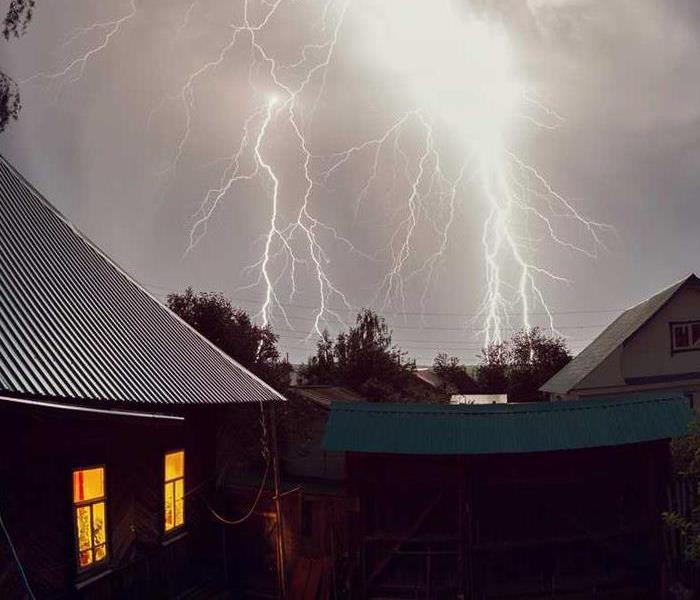 While we hope you never experience a disaster in your home or business, we do know we are ready to help you restore it in the event of one
While we hope you never experience a disaster in your home or business, we do know we are ready to help you restore it in the event of one
Help Us Help You When Flood Damage Descends on Winston-Salem
Our Winston-Salem customers can make a substantial positive impact on the harm flooding can inflict on their home and its contents. Making some changes in how you store items or install systems or appliances can avoid a significant catastrophe if extreme seasonal weather strikes. If you travel or reside in another location for part of the year, establishing a relationship with our team can give you peace of mind even if you are elsewhere when flooding threatens.
Hurricane season stretches over half the year, and even less intense weather systems can expose your Winston-Salem home to flood damage. Having a personal safety plan for yourself and every member of your family is wise. Extending this concept to preparing for potential damage to your home makes sense.
Be prepared with the SERVPRO ERP Plan
SERVPRO of Winston-Salem North offers both business and residential customers the opportunity to collaborate with us to design an individualized Emergency Ready Plan and Profile (ERP). We send an experienced project manager or SMR sales and marketing rep to your home. While there, we check the layout and evaluate the strengths and vulnerabilities of your storage, utility, and other systems, and more.
How to “Weather the Storm”
Expect recommendations to make your home and contents less likely to sustain significant flood damage. Moving items to higher ground and clearing the way to shut off and control panels make it easier for us to respond safely to any emergency. As we work with you developing the ERP, we come to a consensus on the best ways to approach a flood in your home. We need to understand your priorities. We show you how we intend to mitigate and remediate a possible flooding event.
Contact information is crucial
SERVPRO of Winston-Salem North also suggests you nominate a local contact to act on your behalf if you are unavailable during a flooding event. Even if friends or family are vacationing in your home, it is a good idea to have a preselected point person both you and our team relies upon if a disaster occurs.
SERVPRO of Winston-Salem North encourages proactivity to our busy customers. To ready yourself and your property or business for flood damage, call (336) 744-5104 to schedule an ERP assessment.
What to do During and After a Flash Flood
9/3/2020 (Permalink)
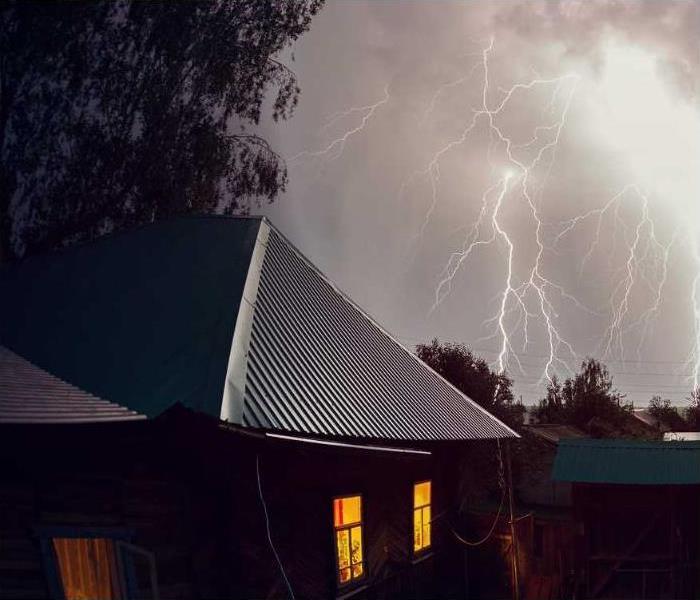 While we hope you never experience a disaster in your home, we do know we are ready to help you restore it in the event of one
While we hope you never experience a disaster in your home, we do know we are ready to help you restore it in the event of one
Flash floods occur as a result of heavy rainfall, rapid snow thaw, city drains overflowing or dam/levee failures. They occur quickly and unexpectedly. Flash Floods can effect ANYWHERE at ANYTIME, because it does rain everywhere. Now, most places are more prone to flooding, and it would be wise to learn about your local area. Cities and Urban environments are most common to flash floods, because of the impermeable surfaces, like asphalt and concrete that make up a majority of our surface roads and sidewalks.
Flash Flood Quick Facts
- Do not walk, swim, or drive through flood waters. Turn Around, Don’t Drown!
- Just 6 inches of rapidly moving floodwater can sweep someone off their feet.
- Just 2 feet of floodwater moving at 9 feet per second (standard speed of flash floods) is enough to sweep vehicles away, move 100 pound rocks, uproot trees or level buildings.
Survive DURING
- Depending on where you are, and the impact and the warning time of flooding, go to the safe location that you previously identified.
- If told to evacuate, do so immediately. Never drive around barricades. Local responders use them to safely direct traffic out of flooded areas.
- Listen to EAS, NOAA Weather Radio, or local alerting systems for current emergency information and instructions.
- Do not walk, swim, or drive through flood waters. Turn Around. Don’t Drown!
- Stay off bridges over fast-moving water. Fast-moving water can wash bridges away without warning.
- If your vehicle is trapped in rapidly moving water, then stay inside. If water is rising inside the vehicle, then seek refuge on the roof.
- If trapped in a building, then go to its highest level. Do not climb into a closed attic. You may become trapped by rising floodwater. Go on the roof only if necessary. Once there, signal for help.
Be Safe AFTER
- Listen to authorities for information and instructions. Return home only when authorities say it is safe.
- Avoid driving, except in emergencies.
- Snakes and other animals may be in your house. Wear heavy gloves and boots during clean up.
- Be aware of the risk of electrocution. Do not touch electrical equipment if it is wet or if you are standing in water. If it is safe to do so, turn off the electricity to prevent electric shock.
- Avoid wading in flood water, which can contain dangerous debris and be contaminated. Underground or downed power lines can also electrically charge the water.
- Use a generator or other gasoline-powered machinery ONLY outdoors and away from windows.
What is a Hurricane?
9/3/2020 (Permalink)
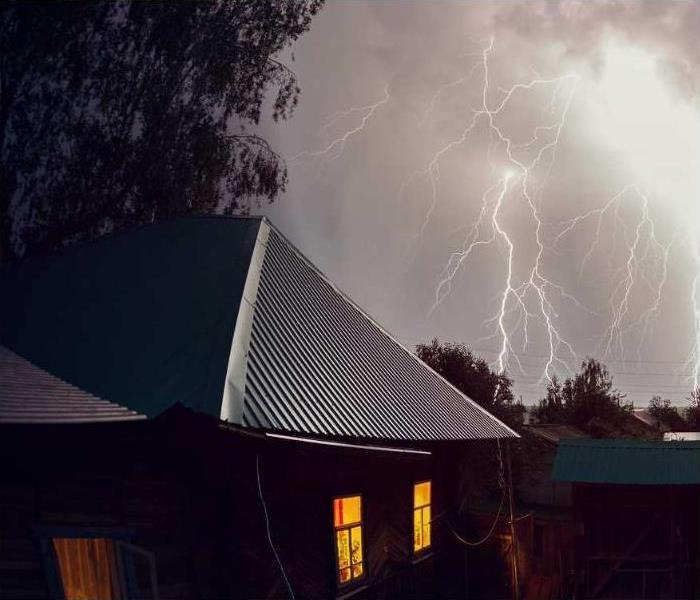 While we hope you never experience a disaster in your home, we do know we are ready to help you restore it in the event of one
While we hope you never experience a disaster in your home, we do know we are ready to help you restore it in the event of one
Hurricanes are Tropical Cyclone storms that form in the Atlantic Ocean and must have sustained winds of 74 mph or greater. They are spinning with a low pressure center and spawn off serious thunderstorms which generate large amounts of rain, high winds, and storm surges.
Fun fact, if the exact same storm forms in the Pacific Ocean, it is called a Typhoon.
So, when does a Tropical Cyclone become a Hurricane and receive it name from NOAA (The National Oceanic and Atmospheric Administration)? It has everything to do with Wind Speed! Once the cyclone sustains winds at 34 mph, it gets its name, and we start calling it “Tropical Storm XXXX,” and when it hits 74 mph, it is promoted to “Hurricane XXXX.”
The NOAA has 6 sets of names that run from A-W; these names repeat until a name is retired. Typically a name is retired after it is catastrophic in damage or death.
I’m not a meteorologist, and I only know it’s raining when I get outside. So with Hurricane Dorian being the first big storm of the 2019 Hurricane Season, I was sent through a loop with the categories. Sure, I knew the bigger the number the scarier it was, but I was lost on the magnitude of what it all really meant. The NOAA has a great chart, that helped me quite a bit, but by far The Weather Channel had the most amazing video. It really puts into perspective the damage that can happen from such a powerful storm.
The Weather Channel : Hurricane Damage from Cat 1 to Cat 5
We can talk all day long about the Saffir-Simpson Scale of Hurricane Winds, and I’ve even included the NOAA Chart for you, but that video is simply mind blowing.
I hope our past few posts on how to prepare for storms and hurricanes is helping this hurricane season. To me, the unknown is scary, so I like to arm myself with as much knowledge as possible from reputable sites. Thank you for your time today, and Stay Safe and Stay Prepared.
It's Time to Take Care of Your Rain Gutters
9/2/2020 (Permalink)
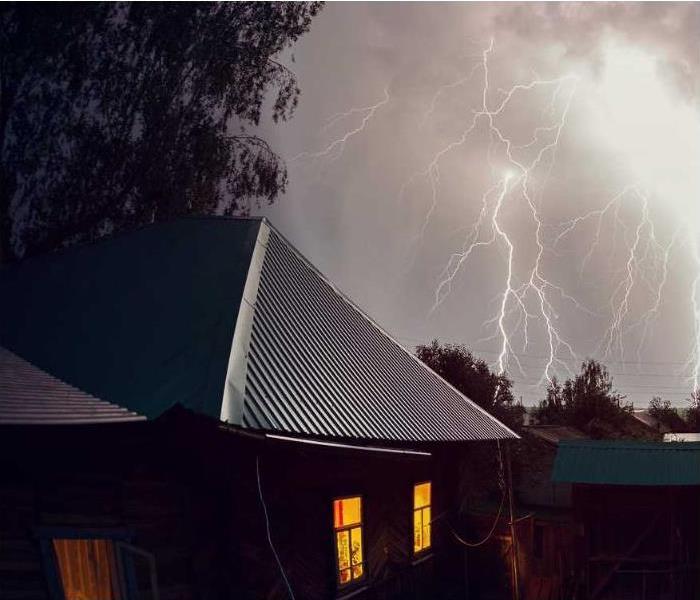 While we hope you never experience a disaster in your home, we do know we are ready to help you restore it in the event of one
While we hope you never experience a disaster in your home, we do know we are ready to help you restore it in the event of one
Summer is winding down, kids are going back to school, the bugs are finally abating. August also means, at least for us in the triad anyways, hurricane season is really getting started. We might not be on the coast, but we will still receive quite a bit of rain, and inclement weather from the spin off of the storms.
An ounce of prevention
Here is your reminder, just in case you might need one, that the gutters have been just hanging out and working hard all summer, and probably full of bird nests, leaves, twigs, and debris. I found a bunch of Nerf Darts in mine--the joys of having a house full of little boys. While those gutters might be working now, are they prepared for the onslaught of a hurricane force rainstorm? While the weather is still somewhat tolerable, go ahead and get them cleaned out.
Gutters are one of your first lines of defense
One of the leading causes of Roof and Water Damage is simply water piling up, pooling, and spilling out of your house’s rain gutters. This is an issue that you probably will not notice until it has become a bigger problem. I know, that I'm not up in my attic daily and wouldn't see the ever growing water stain, until it reaches the ceiling above my bed. That would be if I am lucky, maybe that water took another route and went down the wall and into the insulation. Where there is a water source, there will eventually be mold. It will quickly escalate and become a headache. So don’t forget to clean those RAIN GUTTERS! Go ahead and trim those trees and bushes back while you are up there.
Keeping it rock solid
Once that roof is taken care of, you should turn your attention to the foundation. The most critical roles gutters play is channeling water around and away from your home. If there is something blocking the bottom downspouts, then the water will have nowhere to go and pool around your foundation and landscaping. Home Foundations are what you have built your hopes and dreams upon. Excessive water around it might cause it to leak, shift, crack, or even sink into the surrounding surface. A house’s structural integrity depends on a solid foundation. I’ve got to make sure and mention that you’ll also want to watch where the water is running to; is it heading straight for your sidewalk into your home, or is it settling in your flowerbeds? Make sure to note and correct any areas that water might be pooling unnecessarily.
What if it’s too late?
While cleaning up those gutters and checking your downspouts, make sure to keep a look out for damage that might have already happened. Home maintenance is an easy and quick task, but once an issue does arise, it might be with your roof or basement, so calling a professional is always worth it. I know we are in a DIY climate, but the roof over your head, and the foundation of your home are critical structures designed to keep everything else in your house safe and sound.
Some Winter Weather Q & A
9/2/2020 (Permalink)
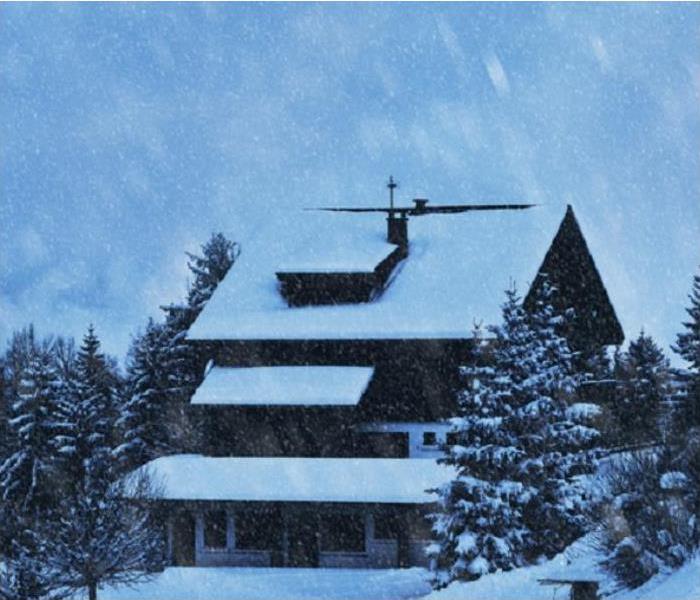 While we hope you never experience a disaster in your home, we do know we are ready to help you restore it in the event of one
While we hope you never experience a disaster in your home, we do know we are ready to help you restore it in the event of one
There's snow business like snow business.
Here's a fun Q & A about Snow in our Area.
Can it ever be too cold to snow?
It rarely snows when the temperature drops below zero degrees Fahrenheit because the atmosphere is too stable. One of the ingredients for snow is enough lifting of saturated air that snow can develop aloft and fall to reach the surface.
What is thundersnow?
Although thunderstorms are less common in the winter, sometimes lightning can occur within snowstorms and is called thundersnow. Thundersnow can be found where there is relatively strong instability and abundant moisture above the surface, such as above a warm front.
How many inches of snow equals one inch of rain?
On average, thirteen inches of snow equals one inch of rain in the US, although this ratio can vary from two inches for sleet to nearly fifty inches for very dry, powdery snow under certain conditions.
What is white lightning?
White lightning is a colloquial term for thunderstorms occurring with snow.
What are the important winter weather notices?
Blizzard Warning: Issued when winds of 35 mph or greater are combined with blowing and drifting snow with visibility of ¼ mile or less. Seek indoor shelter immediately and stay indoors until the severe conditions end.
Winter Storm Warning: Issued when a combination of hazardous winter weather in the form of heavy snow, heavy freezing rain, or heavy sleet is imminent or occurring. Winter Storm Warnings are usually issued 12 to 24 hours before the event is expected to begin.
Winter Storm Watch: Issued 12-48 hours in advance of the onset of severe winter conditions. The watch may or may not be upgraded to a winter storm warning, depending on how the weather system moves or how it is developing.
Winter Storm Outlook: Issued prior to a Winter Storm Watch. The Outlook is given when forecasters believe winter storm conditions are possible and are usually issued 3 to 5 days in advance of a winter storm.
Winter Weather Advisories: Issued for accumulations of snow, freezing rain, freezing drizzle, and sleet which will cause significant inconveniences and, if caution is not exercised, could lead to life-threatening situations.
Wind Chill Warning: Issued when wind chill temperatures are expected to be hazardous to life within several minutes of exposure.
Wind Chill Advisory: Issued for a wind chill situation that could cause significant inconveniences, but do not meet warning criteria. Criteria for issuing Windchill Warnings and Advisories are set locally.
Dense Fog Advisory: Issued when fog will reduce visibility to ¼ mile or less over a widespread area.
Snow Flurries: Light snow falling for a short duration. No accumulation or light dusting is all that is expected.
Snow Showers: Snow falling at varying intensities for brief periods of time. Some accumulation is possible.
Blowing Snow: Wind-driven snow that reduces visibility and causes significant drifting. Blowing snow may be snow that is falling and/or loose snow on the ground picked up by the wind.
Never invite a Tree to a house party, It will never "Leaf"
9/2/2020 (Permalink)
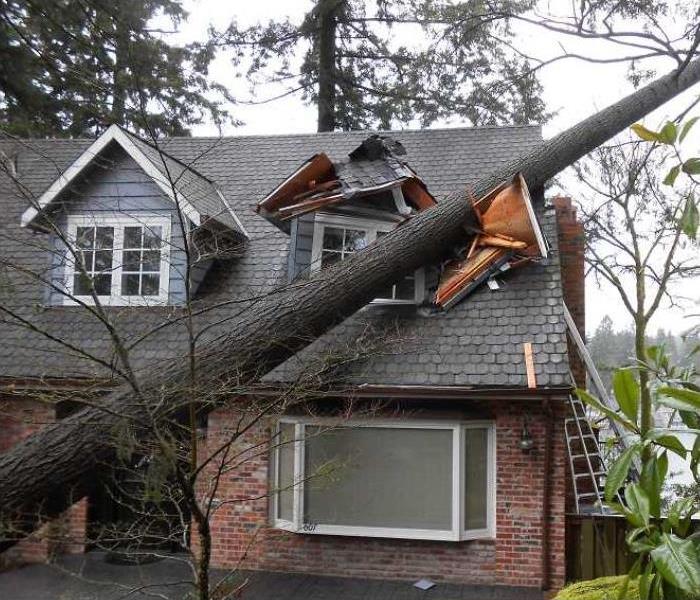 While we hope you never experience a disaster in your home, we do know we are ready to help you restore it in the event of one
While we hope you never experience a disaster in your home, we do know we are ready to help you restore it in the event of one
What to do when a tree falls on your home.
- Evacuate the home.
- Whenever a large branch or tree falls on a home it may have compromised the structural integrity of your home
- Call 911 or a non emergency line if there are no medical emergencies
- For the city of WSNC
- Police & Fire (336) 773-7700
- For the city of Pilot Mountain
- Police (336) 368-4725
- Fire (336) 368-4646
- For the city of Mount Airy
- Police (336) 786-3535
- Fire (336) 786-3570
- Contact your insurance company
- Call SERVPRO of Winston-Salem North
- 1105 Fairchild Road
Winston Salem, NC 27501
Phone: (336) 744-5104
Email: sp9743@yahoo.com
If you don't like the Weather in North Carolina, give it 15 minutes, it'll change. So, when that bomb cyclone in the Midwest turns into a tornado or microburst rain event in our town, turn to the professionals. The experienced team of SERVPRO of Winston-Salem North is available to respond 24/7 to any weather related emergencies. Located blocks away from US-52, our team can quickly respond to any part of the county, making us truly FASTER TO THE DISASTER. Whether it's a flood in Sherwood Forest or a fire in City View, our highly trained technicians along with our specialized equipment can handle any job So, when storm damage strikes choose Winston-Salem's locally owned SERVPRO of Winston-Salem North. When disaster strikes, we’re are Here to Help®
Winter Weather in Winston Salem
9/2/2020 (Permalink)
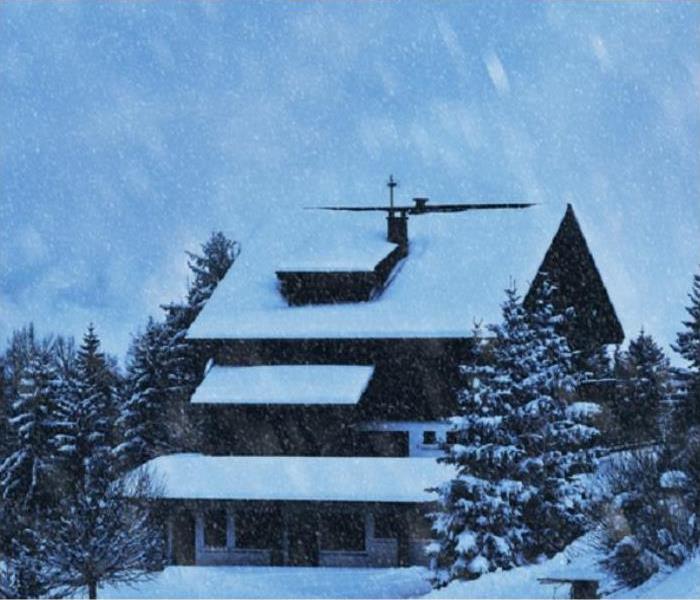 While we hope you never experience a disaster in your home, we do know we are ready to help you restore it in the event of one
While we hope you never experience a disaster in your home, we do know we are ready to help you restore it in the event of one
Types of Winter Precipitation We Can Expect In Winston Salem
- Cold Rain
If precipitation falls through a large depth of the atmosphere frozen but encounters a relatively deep layer of above freezing air at the surface, then the frozen precipitation may completely melt and have no opportunity to refreeze. Thus, what traveled almost the entire trip to the ground as snow may end up falling as a cold rain instead of anything frozen or freezing - Snow
Precipitation begins as snow and if it doesn’t encounter any layers of air that are above freezing before reaching the ground, it will fall to the surface in the form of snow. - Sleet
If the snowflakes encounter a shallow layer of warm, above freezing air with below freezing air through the rest of the column, then it will partially melt and refreeze into a sleet pellet before reaching the ground. - Freezing Rain
If the snow falls into a deep layer of above freezing air with only a shallow layer of below freezing air located at the surface, (which is often the case with cold air damming,) then the liquid droplets will freeze on contact with any objects (such as trees, power lines, and roads) at the surface that are below freezing.
The next two are possible but historically unlikely, but we are seeing them more and more in Winston Salem.
- Blizzards
Dangerous winter storms that are a combination of blowing snow and wind resulting in very low visibility. While heavy snowfalls and severe cold often accompany blizzards, they are not required. Sometimes strong winds pick up snow that has already fallen, creating a ground blizzard. - Ice Storm
a storm which results in the accumulation of at least .25” of ice on exposed surfaces. They create hazardous driving and walking conditions. Tree branches and powerlines can easily snap under the weight of the ice.
How Does Ice Burst Water Pipes?
9/2/2020 (Permalink)
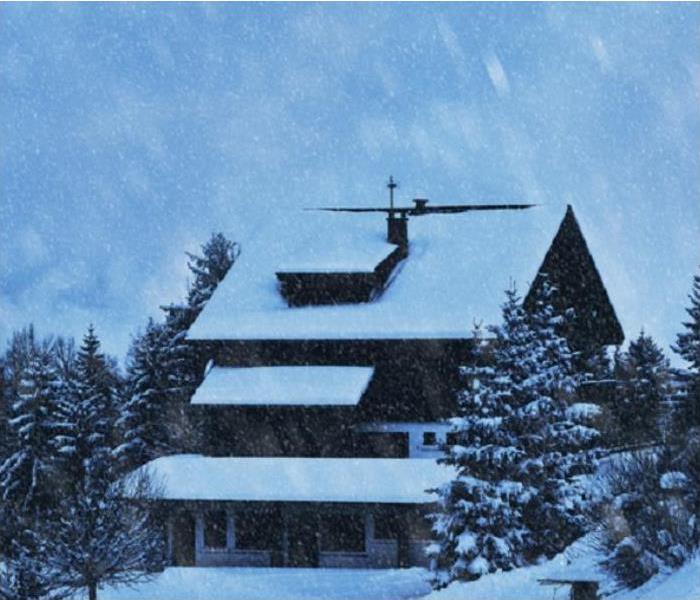 While we hope you never experience a disaster in your home, we do know we are ready to help you restore it in the event of one
While we hope you never experience a disaster in your home, we do know we are ready to help you restore it in the event of one
try and say that title 3 times fast! LOL. but seriously, Frozen pipes are worse than a bad joke.
So most people know that when water freezes it expands. It makes a fool of us all at times. Raise your hand if you have left a soda in the freezer, only to return to an explosion of sticky icy sugar everywhere!
Water Molecules in a natural state are very fluid, but when it reaches it’s freezing point the molecules take on a hexagon structure. This frozen ice block will expand outwards, along the path of least resistance. As it pushes forward, the pressure starts building. While the water in the pipe will flow back towards the main water line in the street, the water trapped between your faucet and the ice block will have nowhere to escape. Once the pressure is too great, somewhere along the line it will fail. Pipes that are the most at risk are those in uninsulated or unheated spaces( your garage, your attic, poorly insulated outside walls).
How to Prevent Your Pipes from Bursting in Winter
- Keep your garage door closed!
- Open cabinets under the sink and in the bathroom, so that they can be reached by the warm air in your home
- Insulate pipes
- On exceptionally cold nights below freezing leave your taps dripping slightly. This might waste a small amount of water, but the wasted water will cost you less than having to replace busted pipes
If your pipes have burst or you notice them leaking, then it’s best to go ahead and turn off the water at your main line.
Then you’ll want to call a plumber, and then you’ll want to call SERVPRO of Winston Salem North 336 744 5104.






 24/7 Emergency Service
24/7 Emergency Service






















